I think the mid-‘80s to mid-’90s was the Golden Age of Bumper Stickers. There were entire spinner racks of these elongated emblems emblazoned with definitive statements that were meant to define one’s ethos. Some were early forms of trolling: I Don’t Brake for Cats. Nuke the Whales.
Maybe because I’m a Gemini, I never got the whole dog/cat thing. I like dogs. I haven’t had a dog as a pet since I was six (as detailed in The Tragedy of Coco) but that doesn’t meant that I don’t like them, or hate them, as many dog lovers seem to hate cats. Usually men. I think a man who hates cats is telling on himself; unlike dogs, cats were not bred for obeisance. Their love is not always given freely. Neither is the love of all dogs, but those are labeled as outliers. Cats are considered feminine, perhaps because dogs chase them. I don’t know. I don’t really care, I find the whole thing stupid.
There is a similar stupidity about wolves. People who claim to love the “frontier,” the wild, often hate its greatest symbol: the wolf. We’ll get back to that, but for now, I’ll focus on the people who love wolves. I met some of them at the Wolf Sanctuary of Pennsylvania, which I learned about thanks to
. You should know about her by now, as this is fourth outing together (the Bald Eagles of Conowingo Dam, the Library of Congress, and the Bass River Civilian Conservation Corps Camp are the others).1She lives in D.C. and I (sadly) live in the Philly metro area, (happily) in New Jersey, and she’s been brilliant at finding cool things to do somewhere in between. The Wolf Sanctuary of PA is one of them. They’ve rescued wolves that can’t be returned to the wild for decades, but recently they have greatly expanded, built more large enclosures, and and give private and public tours. The people who volunteer as guides and caretakers love wolves. And it is easy to love them. They are an iconic creature, from which our beloved dogs share a common ancestor; they are somehow the paragon of dog. Larger, loyal to their family pack to a fault, beautiful, quiet, serene, playful, and surprisingly intelligent. To befriend a wolf is an emotional achievement, and our guide became choked up talking about the wolves he cared for at the sanctuary.
The Darlington family began the Sanctuary in 1976 to give refuge to the endangered gray wolf. It began with one mated pair, who started a pack that died out only recently, when the last litter was all males. By then, the Sanctuary had taken in full-blood wolves and hybrid wolf-dogs that needed a home, but it was decided to not interbreed other rescued wolves with the original pack. Our guide teared up, talking about the now-gone pack. They must have been very special, because the wolves we met, some gray wolves, some timber, some half wolf-dog, some quarter, were all quite special.
You probably know someone who says their dog “has some wolf in them.” Technically this is always true, as we first domesticated the wolf somewhere between 18 and 32 thousand years ago on the steppes of Siberia. But they mean more recently than that, and sometimes it is true, but more often, the dog simply has big paws and a broad muzzle that make them resemble their wild cousins. But there are wolf-dog hybrids, because people who try to keep wolves as pets realized they want to be wild, so they breed them with German Shepherds to try to take some wolf out of them, but keep them wolf enough. Wolves and wolf-dogs are illegal to keep as pets in many states, including Pennsylvania, which is how the sanctuary comes to have them. They match them with a packmate they get along with, so they can live like the wolf they are. Like many wild animals kept as pets, they are too friendly with humans to live safely in the wild, so this is their only safe home.
There’s something sad about a wolf that has to live in a cage; some wolves range hundreds of miles. But at least they are not “lone wolves.” An unnatural thing. Wolf packs are families; I mentioned a few posts ago that the “alpha wolf” who dominates to become pack leader is a myth of human creation, observed only when wolves of different packs are kenneled together, something not seen in the wild. I said then and will repeat, that that is like observing humans in prison or worse and deciding that is our normal behavior. The pack leaders are the parents in a wild wolf pack. There is something lonely and haunting in a wolf’s howl, as well. But it is not a lonely thing to call for your pack, unless there is no one to respond.
One of my least favorite sayings is “Man is wolf to man.” A wolf hunts to eat; men kill for other reasons and declare it moral. Wolves must be annoying to ranchers because they are so smart, but their place in nature is to remove the weak from the herd. If that means a wolf might eat a sheep or a calf, tough titty. They’d happily eat bison calves if you hadn’t slaughtered them all in an attempt to murder every last Indian. There’s a special sense of entitlement to the rancher class, who often graze their cattle on public land and don’t pay (like the Bundy clan of thieves) and feel entitled to murder anyone or thing who interferes with their beeves. They slaughtered the gray wolf, and were against its reintroduction into Yellowstone. They’ve lobbied to be able to murder them at will, and often do. And they like their bumper stickers. I’m condensing this badly. You ought to read the below post by Chris LaTray, who lives in wolf country, with wolf killers.
A patriarch with a large herd has been a figure of power in human society for millennia. Rulers may have needed peons to raise the grain for them to hoard in the first city-states, but the big man with livestock to lend became a liege-lord in his own right, with indebted vassals. Beer and a burger, and you can celebrate two methods of human servitude. After our visit to the lovely sanctuary, we opted for a British pub in nearby Lititz, which we decided is pronounced “Le Tits.” The town has a nice little downtown area with pubs and shops, and the Bull’s Head serves up good brews and pub fare, like this marvelous scotch egg. I think the beer is Flying Dog Gonzo Imperial Porter. The sausage rolls were also exquisite.
When I lived in Minnesota, I drove several hours north to Ely, home of the International Wolf Center. (If you’re a Bob Dylan fan, he grew up in nearby Hibbing, home to an enormous pit mine; he references Ely in “Wicked Messenger.”) The Wolf Center has a pack, and there are wild wolves that live in the nearby woods, that you can try to see at night and make howl. We went for such an outing, but didn’t hear and wild wolves. They are still a wonderful creature to witness, for some of us. Which is why the thought of killing one is abhorrent. Why would someone who claims to love freedom hate the wolf? Maybe they only think they are free, and hate that. Maybe I am inventing thoughts in a mind I can’t understand.
If you want to read about wolves, the books of L. David Mech are a good start. The Wild Animals podcast had a good episode on a red wolf named Kilkenny, that is a good listen:
And of course, here is Hannah’s posts on our trip to the Wolf Sanctuary, which has much better photos than mine.
You may need a paid subscription to see some of those; however, you can start a 7-day free trial and if you choose a yearly subscription, you get 20% off … forever. I don’t make teaser posts where you need to subscribe to finish reading. My short stories are for subscribers only.




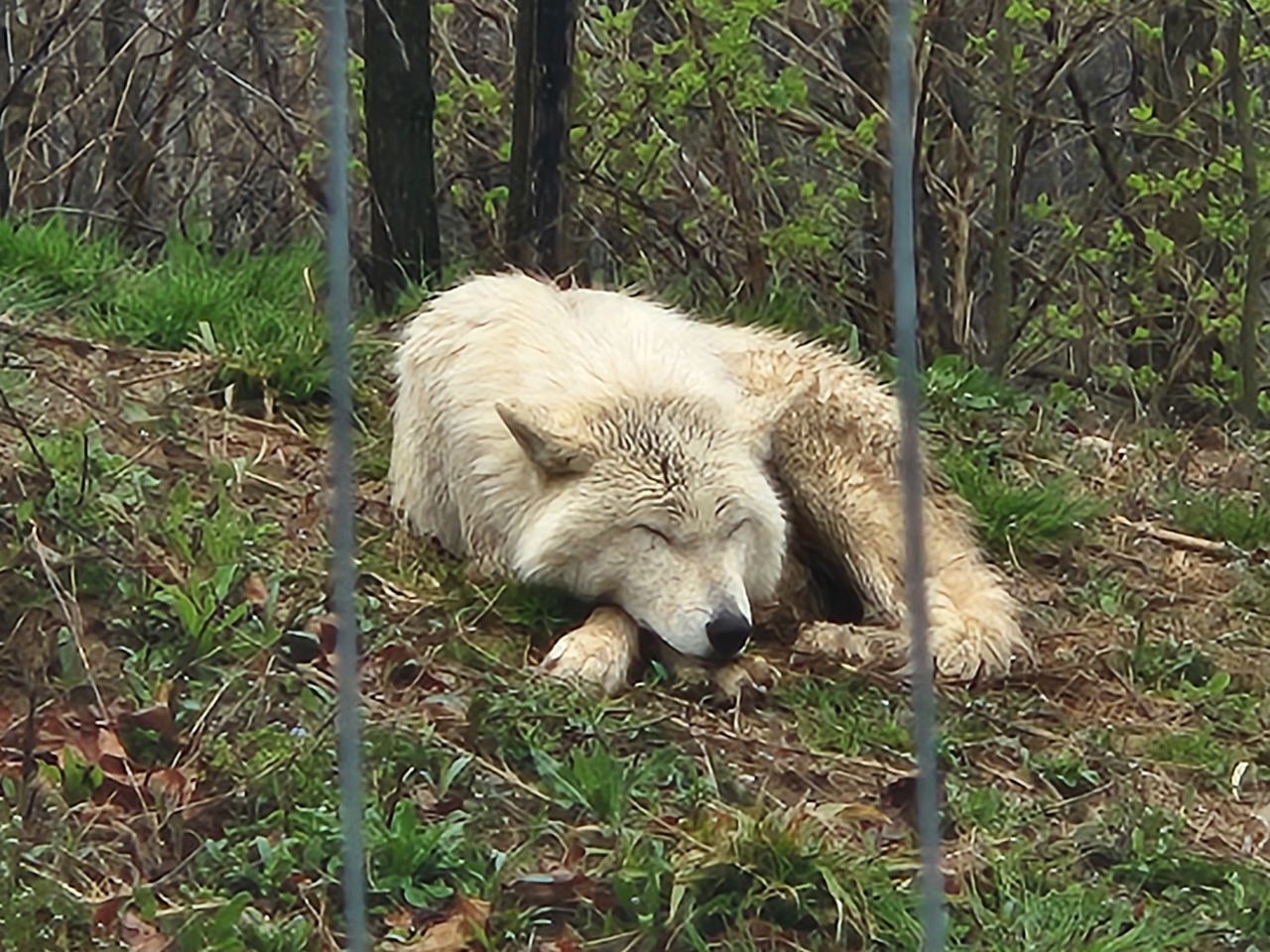
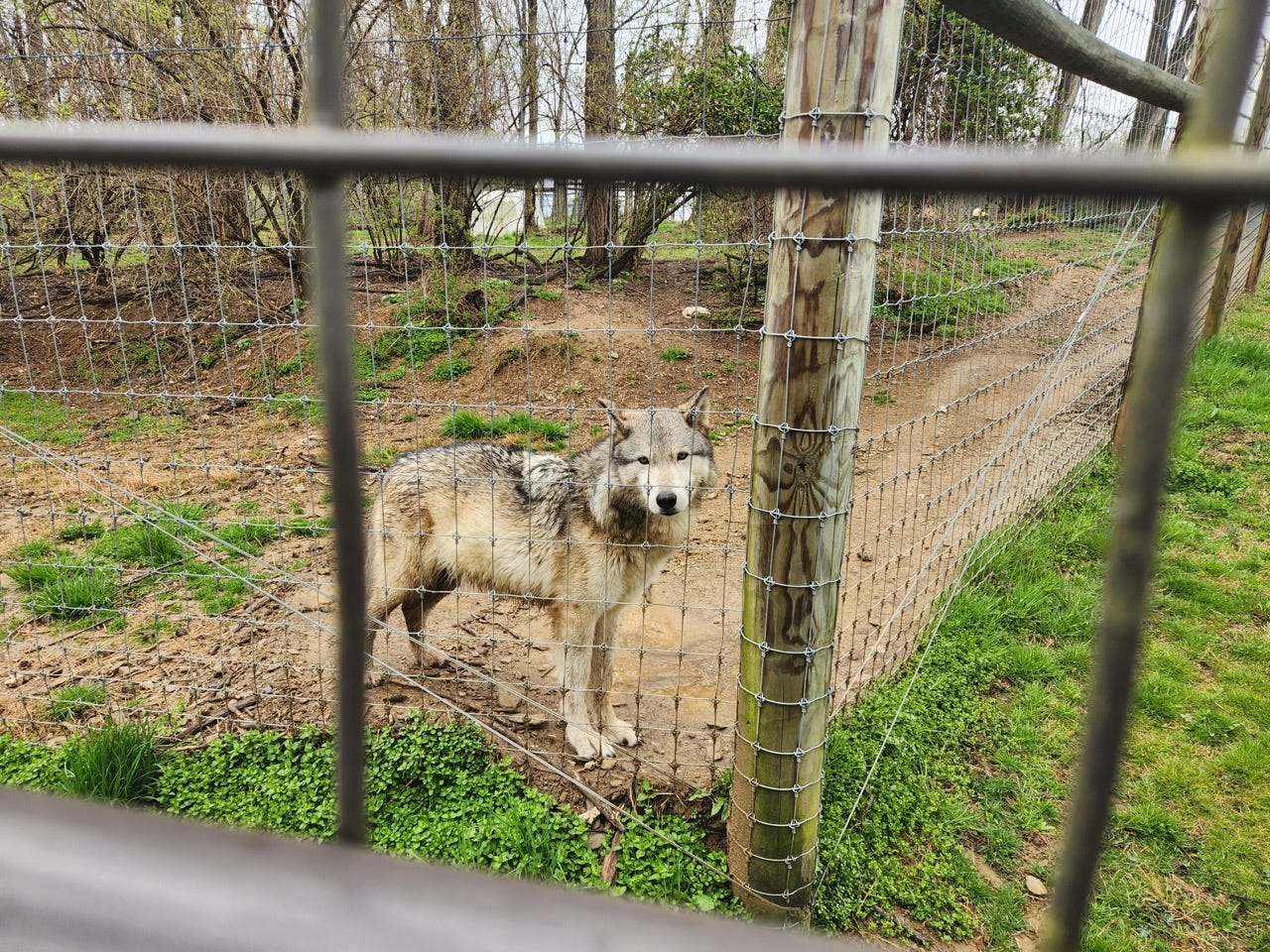
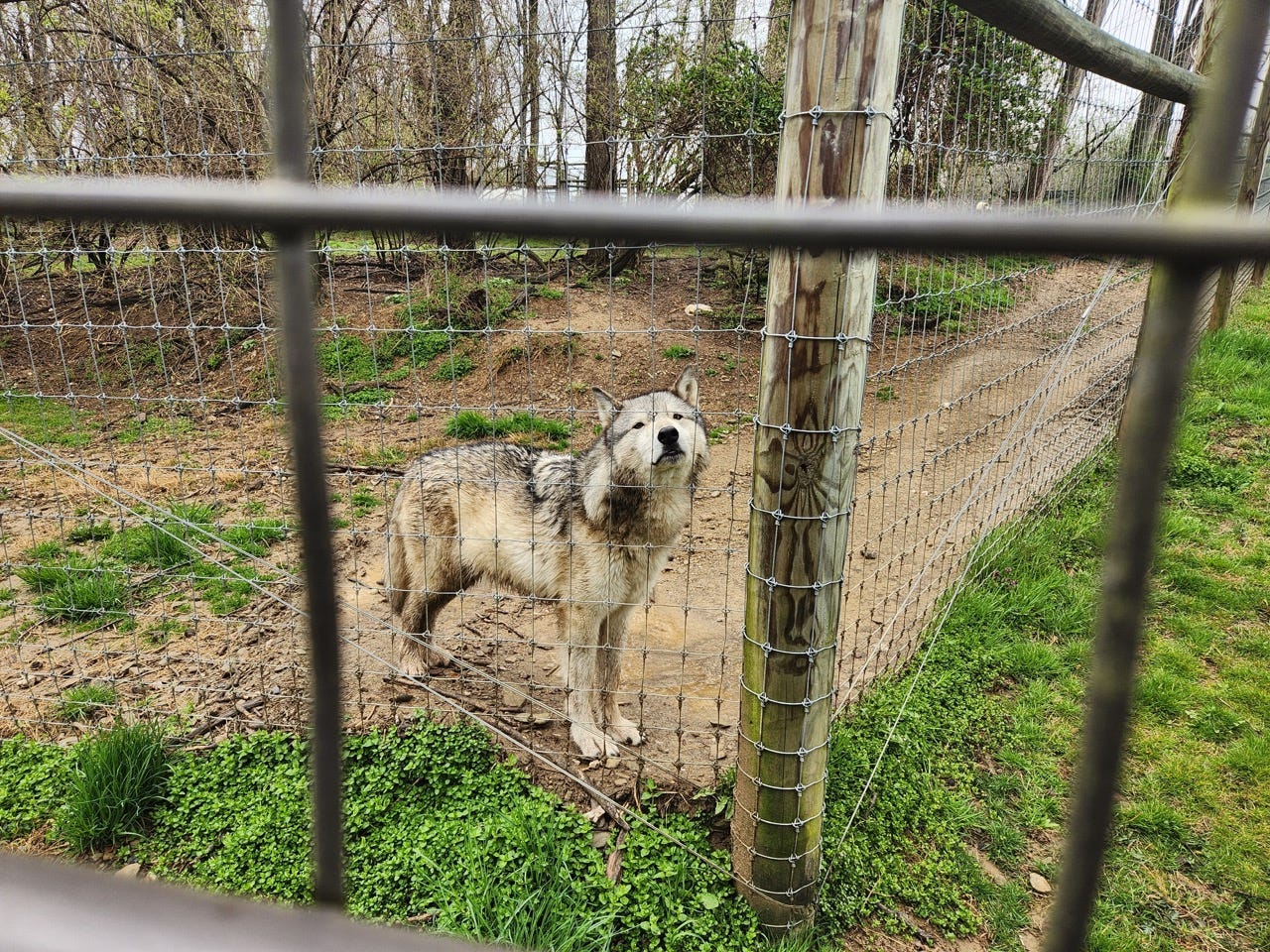
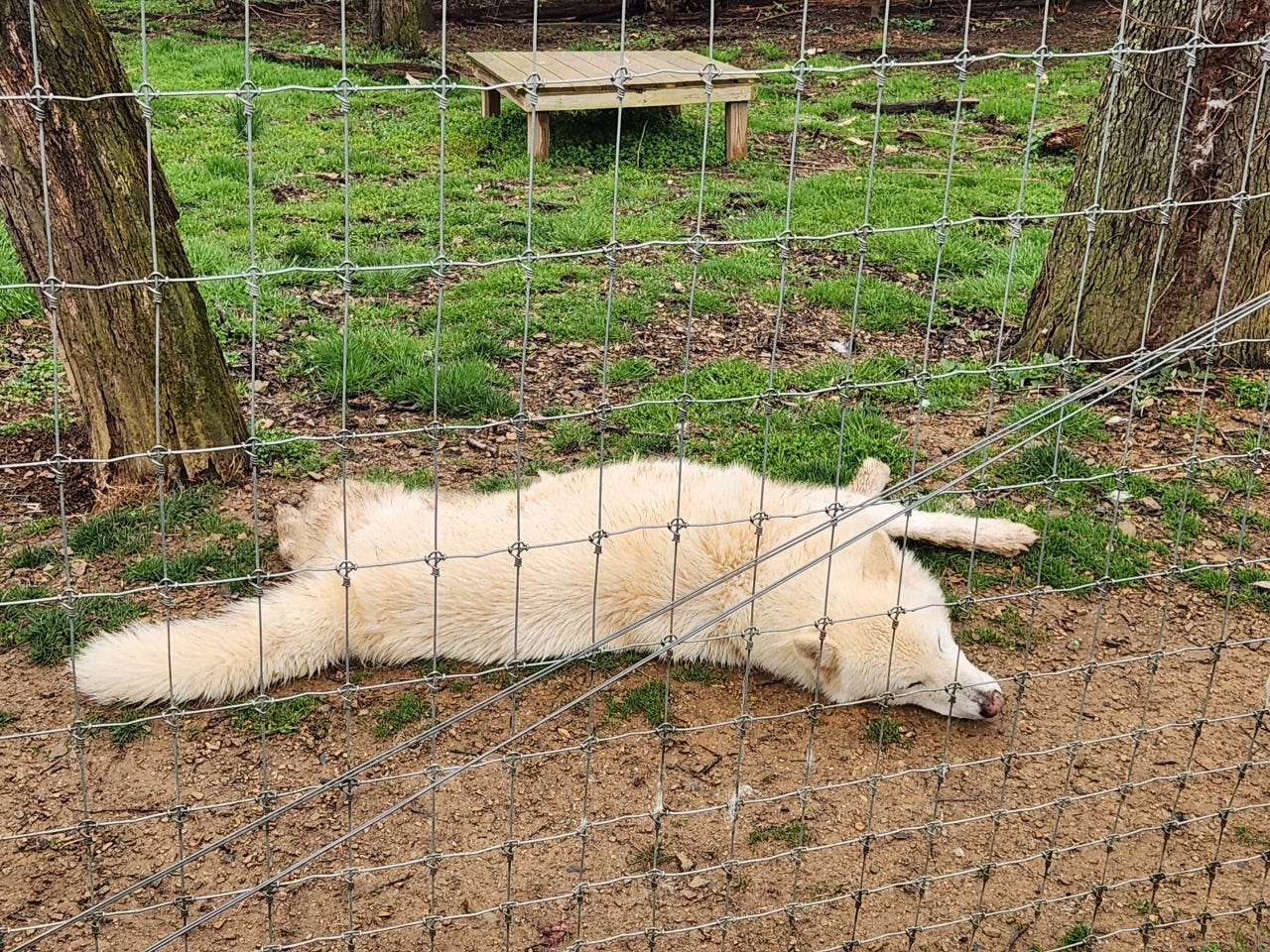
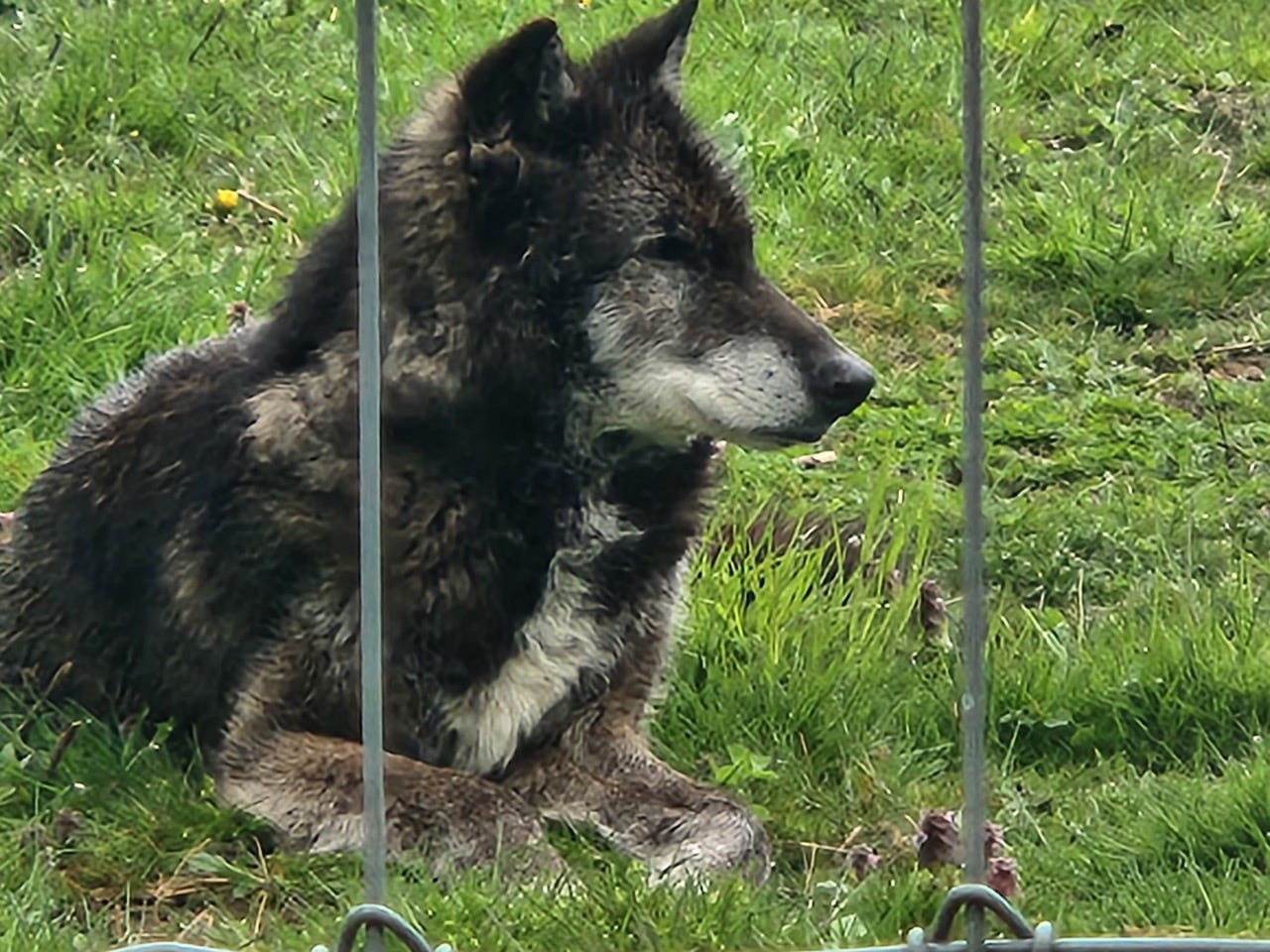



There’s so much to respond to here (which is partly why I’m gonna post another wolf thing probably tomorrow). I dunno, they’re addictive, which I guess is why people get into trouble trying to own them.
Very how do you solve a problem like Maria. Very how do you catch a wave and pin it down.
I think you’re right it has to do with freedom and wanting freedom and trapping freedom and then of course the moment you do that it’s not free ...
And yes definitely the name of the town was Le Tits. Because the beer & scotch eggs were indeed. 😁
So great. I could read wolf-related stuff every day.